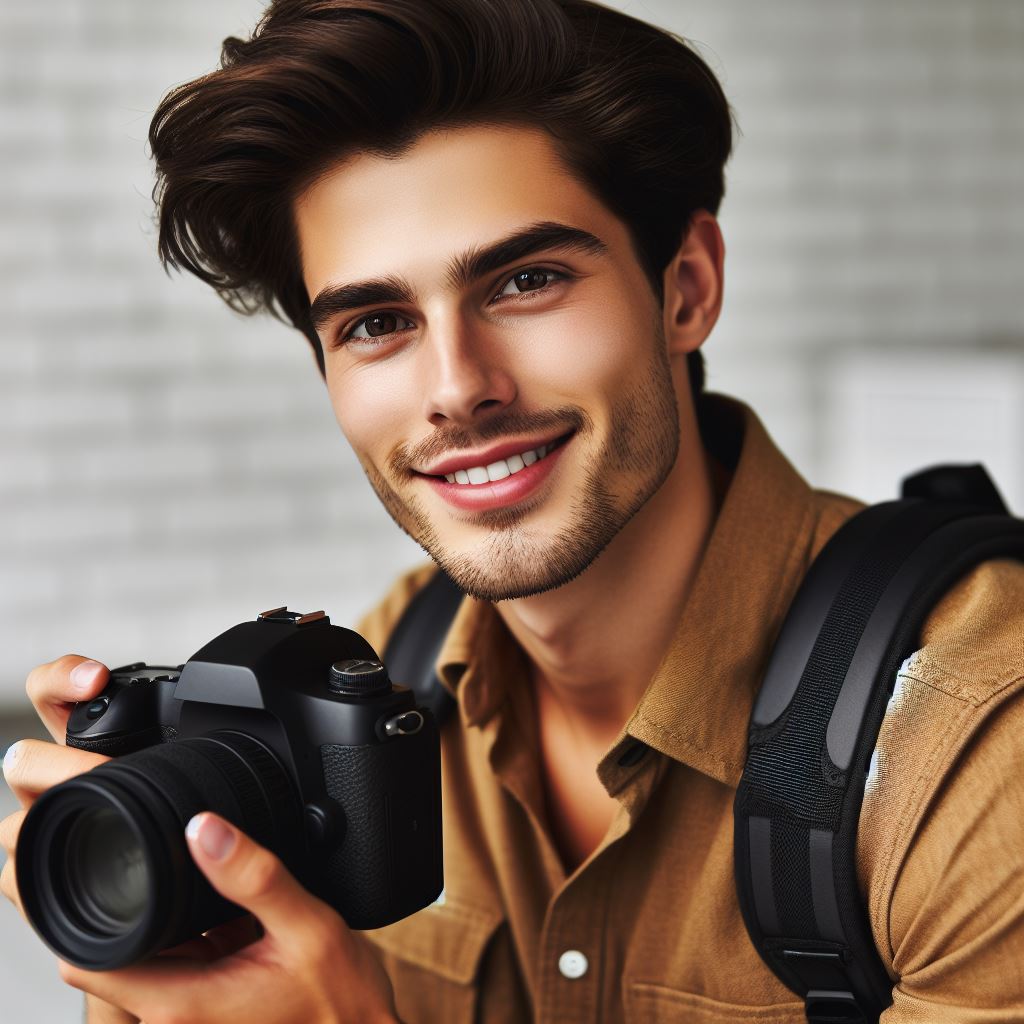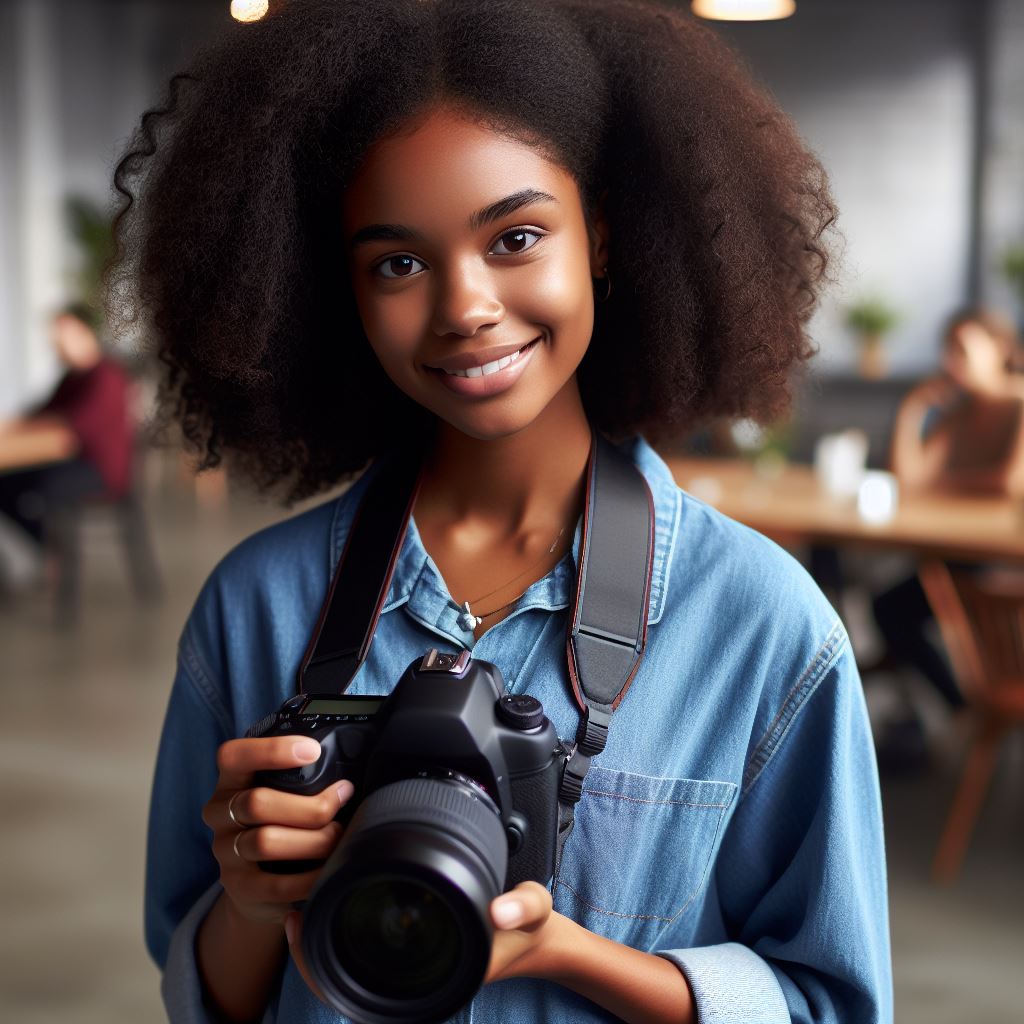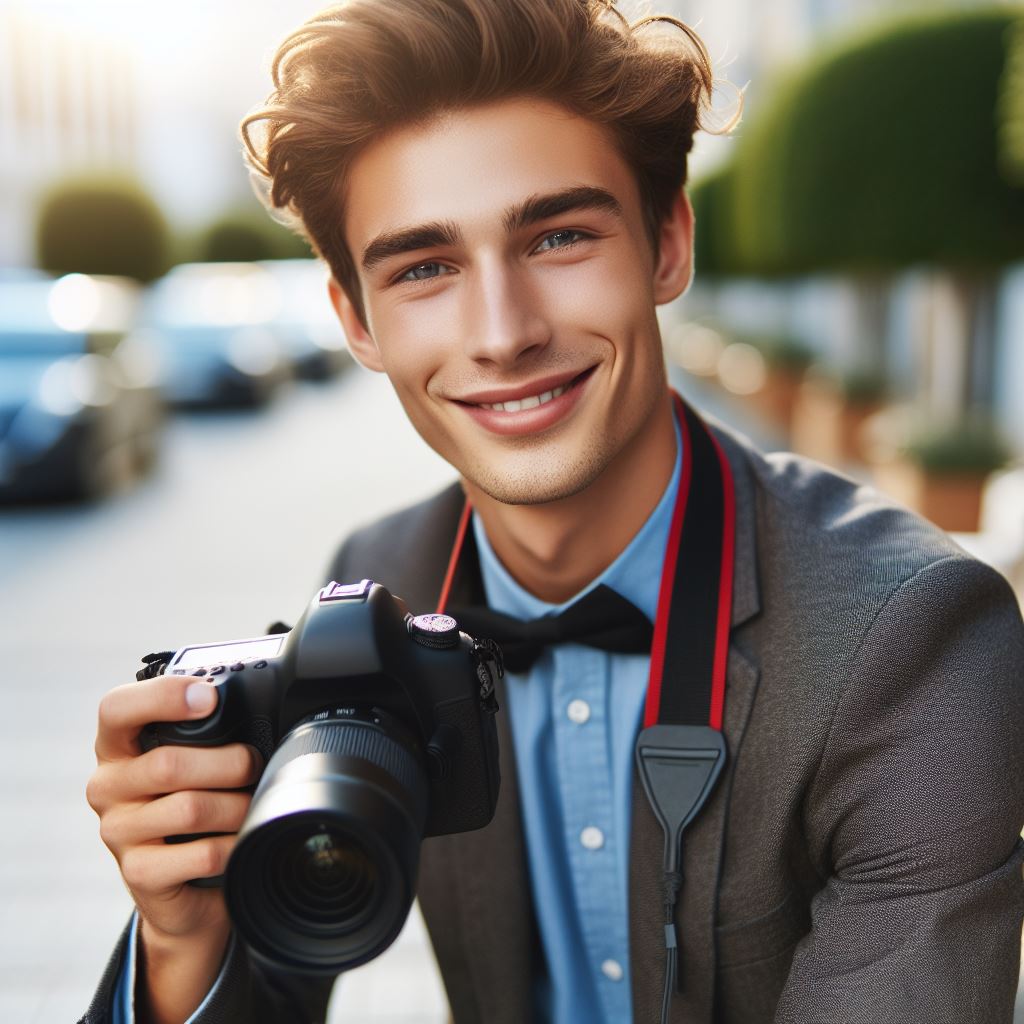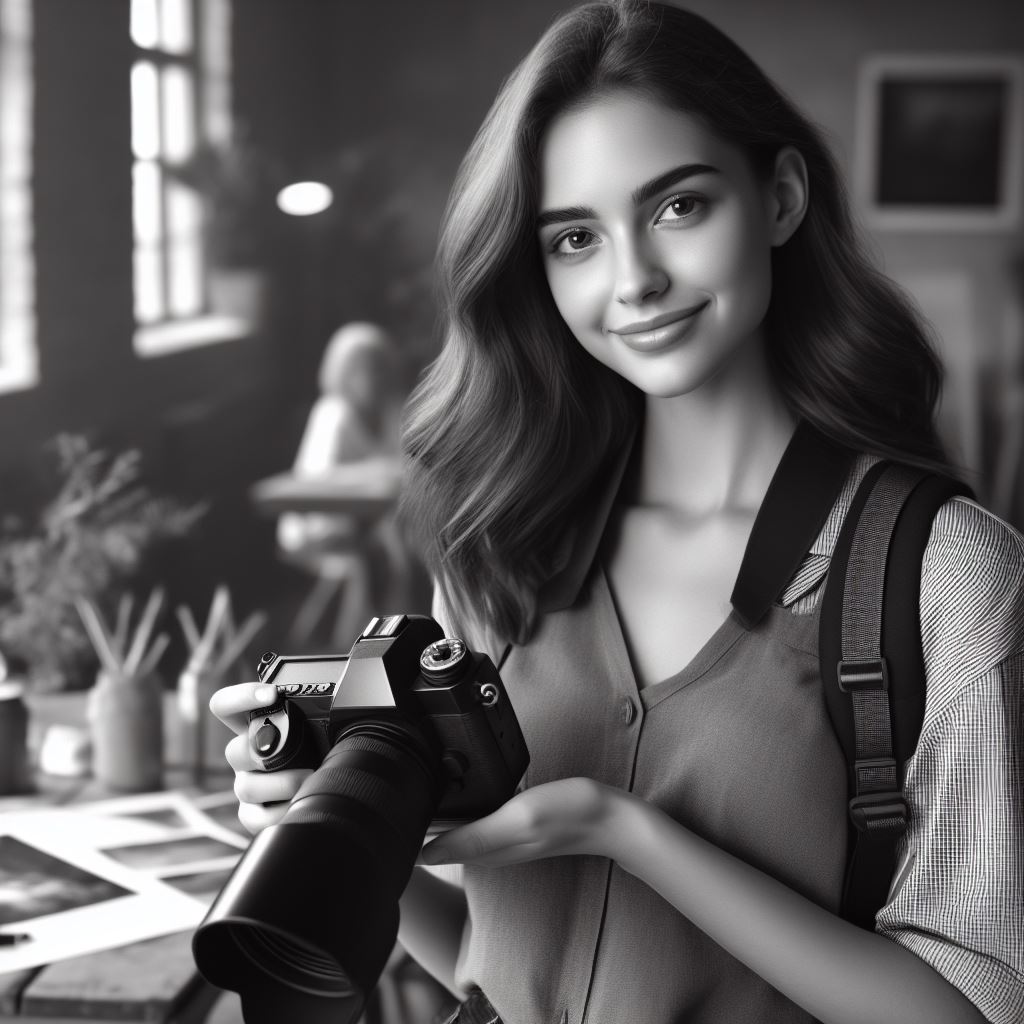Introduction
In the realm of professional photography, the significance of top-notch gear cannot be overstated.
It serves as the conduit between the photographer’s vision and the final image, wielding the power to elevate a photograph from ordinary to extraordinary.
Every piece of equipment, from cameras and lenses to lighting and accessories, contributes to the overall quality and creative expression of the work.
For professionals, investing in the right gear is not just a matter of preference but a strategic decision essential for staying competitive in the industry.
The right tools empower photographers to push the boundaries of their craft, capturing moments with precision, clarity, and artistic flair.
Whether it’s shooting a breathtaking landscape, documenting a fast-paced event, or creating compelling portraits, having reliable gear can make all the difference.
In New Zealand, where stunning landscapes and diverse cultures abound, photographers face unique challenges and opportunities.
From the rugged peaks of the Southern Alps to the serene beauty of Milford Sound, the country offers a wealth of subjects waiting to be captured through the lens.
Against this backdrop, local professionals have honed their expertise and developed a keen understanding of the gear that best suits their needs.
In this blog post, we’ll tap into the wisdom of these seasoned professionals and uncover their top recommendations for photography gear.
Whether you’re a budding enthusiast or a seasoned pro looking to upgrade your kit, their insights and expertise are sure to inform and inspire.
So, join us as we embark on a journey through the world of photography gear, guided by the recommendations of New Zealand’s finest.
Camera bodies
When it comes to photography gear, professional photographers in New Zealand have their preferences for camera bodies.
Different brands and models offer various features and capabilities that cater to the needs of these pros.
In this section, we will discuss the camera bodies recommended by NZ pros, highlighting their image quality, autofocus, and low light performance. We will also mention the pros and cons of each camera body.
Personalized Career Consulting
Unlock your potential with expert career advice tailored to your goals. Get personalized guidance and actionable steps toward your dream career in New Zealand.
Get Started1. Sony A7 III
- Recommended by many NZ pros for its excellent image quality and dynamic range.
- Impressive autofocus system with 693 phase-detection points that covers a wide area.
- Good low light performance due to its backside-illuminated sensor.
- Cons: Limited battery life and a slightly smaller selection of native lenses compared to other brands.
2. Canon EOS R5
- Praised for its exceptional image quality, especially in high-resolution situations.
- Advanced autofocus system with Dual Pixel CMOS AF for fast and accurate focusing.
- Great low light performance with excellent noise handling.
- Cons: Pricey compared to other options and overheating issues for prolonged video recording.
3. Nikon D850
- Known for its outstanding image quality and high-resolution capabilities.
- Advanced autofocus system with 153 focus points and excellent tracking.
- Impressive low light performance with good noise reduction.
- Cons: Quite bulky and heavy, making it less portable for some photographers.
4. Fujifilm X-T4
- Highly regarded for its image quality and film simulation modes.
- Fast and accurate autofocus system with face and eye detection.
- Good low light performance with minimal noise.
- Cons: Smaller sensor size compared to full-frame cameras and limited availability of some lenses.
5. Panasonic Lumix GH5
- Popular among videographers for its high-quality video capabilities.
- Advanced autofocus system with face and eye detection.
- Decent low light performance with effective noise reduction.
- Cons: Smaller sensor size affects image quality in low light compared to larger sensors.
Choosing the right camera body ultimately depends on individual preferences and shooting needs.
Each of these options provides excellent features and capabilities that can elevate the photography experience for New Zealand professionals.
Assessing the pros and cons of each camera body will help photographers make an informed decision based on their specific requirements.
Read: Future of Photography: NZ Industry Insights
Lenses: Exploring the Best Options Recommended by NZ Pros
When it comes to photography gear, one cannot underestimate the significance of lenses.
They can make or break your shots, so it’s essential to choose the right ones.
In this section, we will delve into the different lens options recommended by professionals in New Zealand.
Prime Lenses vs. Zoom Lenses: Understanding Their Specific Uses
One must first understand the difference between prime lenses and zoom lenses before making a decision.
Prime lenses have a fixed focal length, meaning they cannot zoom in or out.
On the other hand, zoom lenses offer variable focal lengths, allowing you to adjust the zoom level.
Prime Lenses
- Wide-Angle Prime Lenses: These lenses are perfect for capturing vast landscapes, cityscapes, and architecture.
They provide a wide field of view, ensuring nothing gets cut out of the frame. - Standard Prime Lenses: With a focal length similar to the human eye (around 50mm), these lenses produce natural-looking images without any distortion. They are great for portrait photography.
- Telephoto Prime Lenses: If you’re interested in wildlife or sports photography, these lenses are your go-to option.
Their longer focal length allows you to get closer to the subject without actually being physically near it.
Zoom Lenses
- Wide-Angle Zoom Lenses: These lenses offer versatility and convenience as they cover a wide range of focal lengths, allowing you to capture both wide-angle and semi-telephoto shots.
They are ideal for travel and street photography. - Standard Zoom Lenses: With a variable focal length, these lenses provide flexibility, allowing you to zoom in and out to capture different compositions.
They’re commonly used for everyday photography. - Telephoto Zoom Lenses: These lenses offer a significant zoom range, making them perfect for wildlife, sports, and event photography.
They allow you to get close to the subject while maintaining image quality.
The Importance of Lens Versatility and Image Quality
As a photographer, having lens versatility is crucial as it allows you to adapt to various shooting situations.
Both prime and zoom lenses have their advantages, and the choice depends on your specific needs and style of photography.
When it comes to image quality, lenses play a vital role. High-quality lenses tend to produce sharper, clearer, and more detailed images.
They also have better optics, minimizing lens aberrations such as distortion and chromatic aberration.
Transform Your Career with a Professional CV and Cover Letter
Stand out to employers with an ATS-optimized resume and tailored cover letter designed to match your dream role. Let us craft your job application materials for success!
Get StartedInvesting in good lenses might seem expensive, but they can significantly enhance your photography and set your work apart from others.
Remember, high-quality lenses can last a lifetime and can be used across multiple camera bodies, making them a worthy investment in the long run.
In fact, choosing the right lenses is essential for any photographer.
Whether you prefer prime lenses for their specific focal lengths or zoom lenses for their versatility, always prioritize image quality.
With the right lenses in your arsenal, you’ll be well-equipped to capture stunning photographs in any shooting situation.
Read: The Business of Photography in NZ Explained

Tripods and Stabilizers: Essential Tools for Professional Photographers
When it comes to professional photography, one cannot underestimate the importance of using tripods and stabilizers.
These tools not only provide stability and support but also allow photographers to capture sharp and well-composed images.
Let’s explore the significance of tripods and stabilizers in professional photography.
The Significance of Tripods
Tripods are indispensable for photographers who want to achieve absolute stability in their shots.
They eliminate camera shake caused by hand movements and help capture tack-sharp images, particularly in low light conditions or when using longer exposure times.
Tripods provide a solid base for the camera, ensuring every detail is captured with precision.
There are several tripod types available in the market, each designed to cater to different photographic needs.
Let’s take a look at some of the most commonly recommended tripod types and brands by professionals in New Zealand:
Boost Your Career with a Standout LinkedIn Profile
Attract recruiters and expand your network with a fully optimized LinkedIn profile tailored to highlight your strengths and professional goals. Let your profile open doors to new opportunities!
Get Optimized1. Traditional Tripods
Traditional tripods are the most popular and widely used type of tripod.
They consist of three legs that can be extended or retracted as needed.
Brands such as Manfrotto, Gitzo, and Benro are known for their quality traditional tripods.
2. Travel Tripods
For photographers always on the go, travel tripods offer a compact and lightweight solution without compromising stability.
Brands like MeFoto and Sirui produce excellent travel tripods that are easy to carry without sacrificing quality.
3. Carbon Fiber Tripods
Carbon fiber tripods, though more expensive, provide additional advantages such as being lightweight, resistant to vibration, and having excellent durability.
Brands like Really Right Stuff and Induro are often recommended for their high-quality carbon fiber tripods.
The Role of Stabilizers
In addition to tripods, stabilizers like gimbals and sliders play a crucial role in professional photography.
They allow photographers to achieve smooth and steady camera movements, adding a cinematic touch to their videos or capturing creative shots with ease.
1. Gimbals
Gimbals are handheld devices that use motorized systems to stabilize the camera while capturing smooth footage.
They are particularly suited for capturing dynamic scenes or video shots that require movement. Popular gimbal brands include DJI, Zhiyun, and FeiyuTech.
2. Sliders
Sliders are another essential tool for photographers who want to add cinematic motion to their videos or create interesting sliding shots.
They allow the camera to move smoothly along a track, providing a unique perspective.
Brands such as Rhino Camera Gear and Edelkrone offer reliable and versatile sliders.
Both gimbals and sliders offer photographers greater control over their compositions and help elevate their visual storytelling capabilities.
In short, tripods and stabilizers are not just accessories but indispensable tools for professional photographers.
They provide essential stability and unique creative possibilities.
Whether capturing stunning landscapes, shooting long exposures, or creating cinematic videos, investing in high-quality tripods and stabilizers can make a significant difference in the quality of your work.
Read: Mastering Portraits: Tips from NZ Pros
Lighting equipment
In professional photography, lighting plays a crucial role in creating stunning and captivating images.
It is the key element that can make or break a photograph, providing depth, dimension, and mood.
Different lighting equipment recommended by NZ pros
To achieve professional results, professional photographers in New Zealand recommend various lighting equipment options:
1. Speedlights
- Portable and versatile lighting units that can be easily attached to the camera or used off-camera.
- Perfect for on-location shoots, especially in situations where natural light is not sufficient.
- Provides flexibility in adjusting the intensity and direction of the light.
- Ideal for creating dramatic effects and highlighting specific subjects or areas of the photograph.
2. Studio lights
- Powerful lighting units designed for studio setups and controlled environments.
- Offer consistent and controllable lighting, allowing photographers to have full control over the scene.
- Available in various types, such as strobes, continuous lights, and LED panels, each with its own advantages.
- Commonly used in fashion photography, commercial shoots, and other staged setups.
3. Modifiers – Softboxes and Umbrellas
- Softboxes are large, fabric-covered enclosures that diffuse and soften the light, reducing harsh shadows.
- Provide a broad and even light source, creating a flattering and professional look in portrait photography.
- Umbrellas, either shoot-through or reflective, can also soften the light, but with a slightly different effect.
- Shoot-through umbrellas produce a broader and softer light, while reflective umbrellas offer a more focused result.
Importance of modifiers like softboxes and umbrellas
The importance of modifiers like softboxes and umbrellas cannot be overstated.
They significantly influence the quality and character of the light, allowing photographers to shape it according to their vision.
By diffusing and scattering the light, these modifiers help minimize harsh shadows, reduce glare, and create a more pleasing and balanced illumination.
Whether photographers are working with speedlights or studio lights, modifiers enable them to achieve the desired lighting effect.
They help control the direction, intensity, and quality of the light, resulting in more professional and visually appealing images.
Photographers in New Zealand recommend investing in a range of lighting equipment and modifiers to have maximum versatility and flexibility in various shooting conditions.
With these tools, they can adapt to different environments, overcome lighting challenges, and consistently produce exceptional photographs.
The choice of lighting equipment and modifiers ultimately depends on the specific genre of photography and individual preferences.
Experimenting with different lighting setups and techniques is key to discovering the perfect combination that enhances the subject and transforms an ordinary scene into an extraordinary visual masterpiece.
In general, lighting equipment is essential for professional photographers in New Zealand.
The right combination of speedlights, studio lights, and modifiers like softboxes and umbrellas can elevate their work, adding depth, dimension, and visual impact to their photographs.
By understanding the role of lighting and exploring various equipment options, photographers can unlock their creative potential and capture stunning images that leave a lasting impression.
Read: Nature Photography: NZ’s Best Locations
Camera bags and accessories
Importance of protecting and carrying photography gear
As a professional photographer, your gear is an essential investment, and protecting it should be a top priority.
A good camera bag can ensure the safety and longevity of your equipment.
Recommended camera bag brands and models
- Peak Design: Their bags are known for their functionality and durability, with models like the Everyday Backpack and Travel Line.
- Manfrotto: Offers a range of camera bags, including backpacks, shoulder bags, and rolling cases, suitable for various needs.
- Think Tank: Their bags are designed specifically for photographers, offering excellent organization and protection.
- Tamrac: Known for their high-quality materials and comfortable designs, with popular models like the Anvil and G-Elite series.
Other accessories: memory cards, batteries, and cleaning kits
Camera accessories are as important as the gear itself. Here are some essential items:
- Memory cards: Investing in high-quality memory cards is crucial to ensure reliable storage and quick data transfer.
Look for brands like SanDisk, Lexar, and Sony. - Batteries: Carrying spare batteries can be a lifesaver during long shoots.
Opt for genuine batteries from your camera manufacturer or trusted third-party brands. - Cleaning kits: To maintain image quality, keep your lenses and camera sensors clean.
Cleaning kits with lens pens, microfiber cloths, and sensor swabs are essential.
Remember to regularly clean your gear, recharge batteries, and format memory cards to avoid any technical issues during important shoots.
Conclusion
Photography gear plays a crucial role in professional photography.
It enhances the quality and versatility of images, allowing photographers to capture stunning shots.
To summarize, New Zealand pros recommend investing in a high-quality camera body, a variety of lenses, a sturdy tripod, and reliable memory cards.
These essential pieces of gear enable photographers to capture different perspectives and ensure the safety of their images.
It is important for readers to consider their specific photography needs and budget when selecting gear.
Each photographer may require different equipment based on their genre, style, and shooting conditions.
By carefully evaluating their requirements and investing in the appropriate gear, photographers can elevate their skills and create exceptional images.
So, take the time to assess your needs, research different options, and make informed decisions when purchasing photography gear.
Remember, it’s an investment that can significantly impact the quality of your work.




